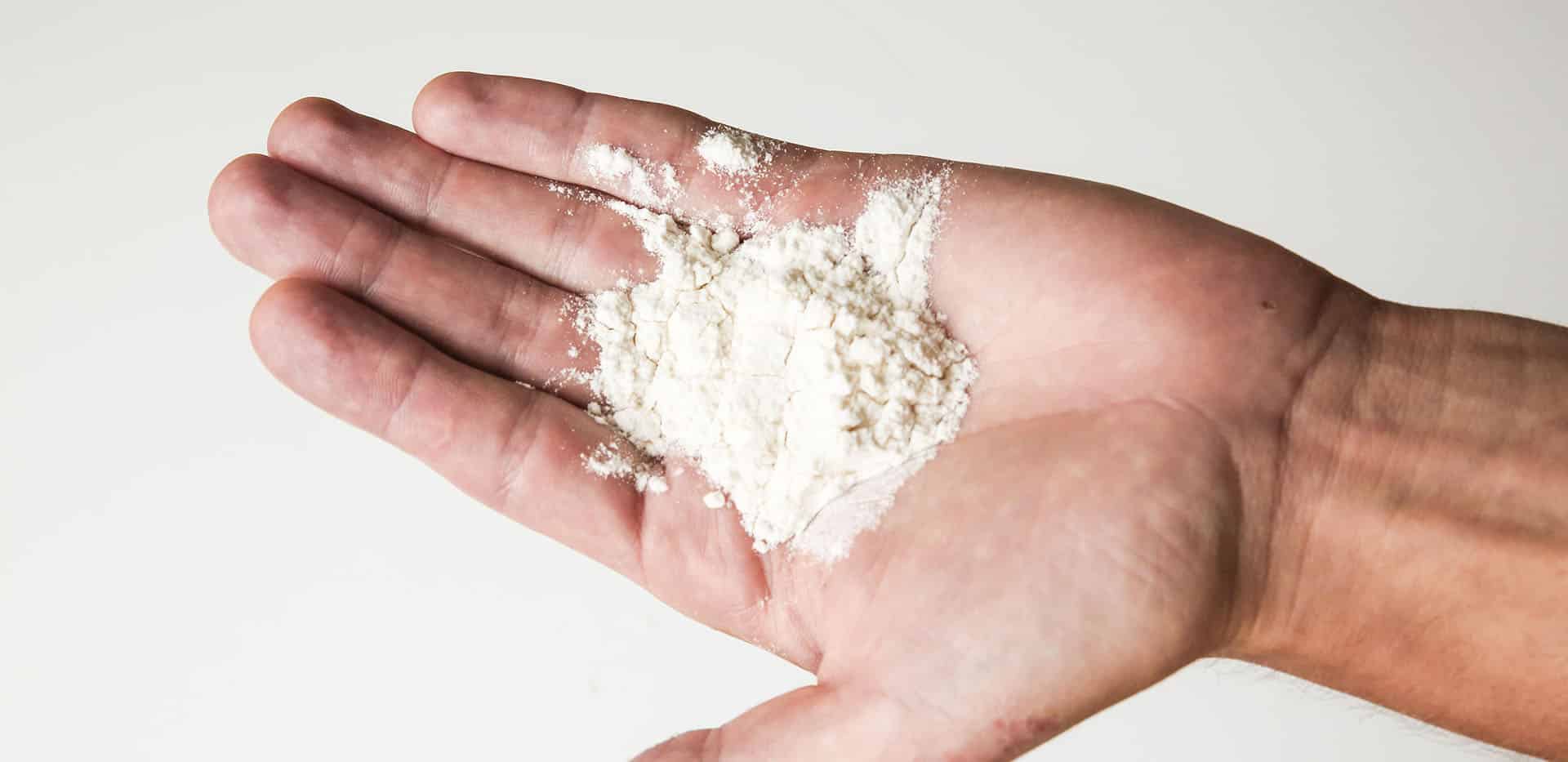High-purity, low-radioactive spherical silica powder production technology
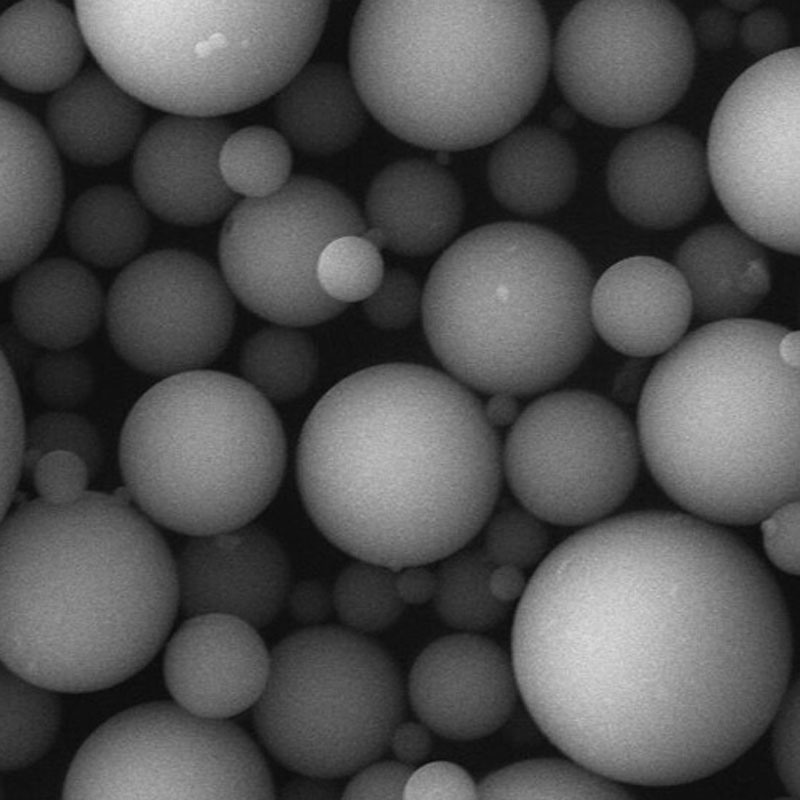
Spherical silicon powder is widely used in integrated circuit packaging due to its excellent fluidity and low thermal expansion coefficient. With the development of large-scale and ultra-large-scale integrated circuit packaging technology, in order to avoid soft errors in semiconductor devices, radioactive elements are obtained. In particular, the high-purity and low-radioactive spherical silica micropowder with uranium (U) content (mass fraction) less than 1×10-9 has become a research hotspot in recent years.
First, the uranium (U6+) element in the ultrafine silicon powder is dispersed in the acidic slurry, and then the SiO2 aerogel and honeycomb ceramic composite mesoporous adsorption device is used to adsorb it to complete the material selection and purification, so that the ultrafine silicon powder The total content of uranium (U) element is reduced to below 1×10-9, and high-purity and low-radioactive spherical silica powder is finally obtained by flame melting method and non-polluting post-processing technology. The mesoporous adsorption device can be easily and quickly separated from the slurry after the adsorption is completed, and can realize recycling and large-scale amplification; and the obtained samples have the characteristics of high sphericity and controllable particle size distribution, and at the same time, the application performance such as fluidity performance good.
1. Selection and purification of microsilica
The first step is to pre-treat the uranium (U)-containing silicon micropowder
The second step is to prepare a mesoporous adsorption device
The third step, adsorption and purification
In the experiment, ordinary silicon powder with a uranium (U) content of 9.7×10-9 was selected for purification. If only deionized water was used to purify the ultra-fine silicon powder, the uranium (U) element content in the material was only from 9.7×10-9 It is reduced to 9.0×10-9; when the ultrafine silicon powder is dispersed with a solution of pH≤4.5, the uranium (U) element content in the purified silicon powder can be reduced to 7.3×10-9.
However, due to the failure to remove the hexavalent uranium element dispersed in the acid slurry, the uranium element is re-adsorbed on the surface of the silicon micropowder particles during the sedimentation and drying process, which reduces the purification effect. uranium element. After using the mesoporous adsorption device, the hexavalent uranium (U6+) element dispersed in the slurry could be effectively adsorbed by the SiO2-based aerogel and decreased gradually with the increase of adsorption times. After three purification and separation experiments, The uranium (U) element content can be reduced to 6×10-10. This shows that when the purity of the material cannot meet the requirements for the direct production of high-purity and low-radioactive spherical silica powder, the uranium content can also be reduced by using the selective purification technology. The experimental results also show that the uranium in the silicon micropowder can be effectively separated by acid washing, and the separated uranium can be efficiently adsorbed by the mesoporous adsorption material. Based on this process technology, subsequent batch production can be carried out.
2. Spheroidization and particle size distribution design
First, add zirconia ceramic protection to the surface of all parts that the ultrafine silicon powder may come into contact with in the subsequent process to ensure that the uranium (U) element will not be introduced in the subsequent process to cause secondary pollution, and then put the ultrafine silicon powder into the In the spheroidizing furnace, through the temperature field (1800 ~ 2200 ℃), the air flow field (with oxygen as the carrier gas and oxidant, natural gas as the gas, the ratio of the flow rate of the gas and the oxidant is 1.05) and the material flow (50 ~ 500kg/ h) The control of spheroidization is carried out, and the ultra-fine silicon powder stays in the temperature field for 0.1-3s under a certain air pressure. The spheroidized products are subjected to particle size classification and compounding, and the corresponding particle size distribution is designed according to different packaging requirements.
The production process reduces the excessive dependence on high-purity raw materials for the production of high-purity and low-radioactive spherical silica micropowder to a certain extent.
How to modify the surface of nano-zinc oxide?
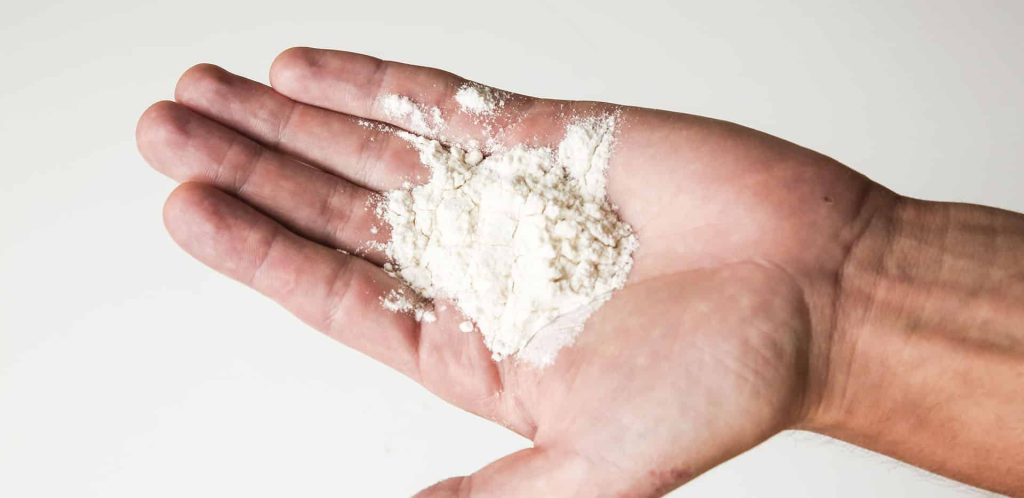
Nano-zinc oxide is a new type of functional fine inorganic chemical material. Due to its small particle size and large specific surface area, it has unique physical and chemical properties in chemical, optical, biological and electrical aspects. It is widely used in antibacterial additives, catalysts, rubber , dyes, inks, coatings, glass, piezoelectric ceramics, optoelectronics and daily chemicals, etc., the development and utilization of broad prospects.
However, due to the large specific surface area and specific surface energy of nano-zinc oxide, the surface polarity is strong, and it is easy to agglomerate; it is not easy to disperse uniformly in organic media, which greatly limits its nano-effect. Therefore, the dispersion and surface modification of nano-zinc oxide powder has become a necessary treatment method before nano-materials are applied in the matrix.
1. Surface coating modification of nano-zinc oxide
This is the main surface modification method of inorganic fillers or pigments at present. Surfactant is used to cover the surface of particles to give new properties to the surface of particles. Commonly used surface modifiers include silane coupling agent, titanate coupling agent, stearic acid, silicone, etc.
Wang Guohong et al. used sodium laurate to modify the surface of nano-zinc oxide. Under the conditions that the amount of sodium citrate was 15%, the pH value was 6, and the modification time was 1.5h, the lipophilicity of the modified nano-zinc oxide was improved. The chemical degree reaches 79.2%, and it can be well dispersed in methanol and xylene. Zhuang Tao et al. used titanate coupling agent to modify the surface of nano-zinc oxide. When the amount of titanate was 3%, the temperature was 30°C, and the stirring time was 90min, the activation index of nano-zinc oxide could reach 99.83%. When the modified nano-zinc oxide is applied to natural rubber, its tst and t90 are both extended, and the tensile strength, elongation at break, and flexural flexibility are all improved.
2. Mechanochemical modification of nano-zinc oxide
This is a method of using pulverization, friction and other methods to activate the particle surface with mechanical stress to change its surface crystal structure and physicochemical structure. In this method, the molecular lattice is displaced, the internal energy is increased, and the active powder surface reacts and attaches to other substances under the action of external force, so as to achieve the purpose of surface modification.
The stearic acid molecule is chemically bonded on the surface of zinc oxide, the crystal structure of zinc oxide before and after modification is the same, the agglomeration of its particles is reduced, and the secondary particle size is significantly reduced. By measuring the activation index and lipophilicity of the modified samples, the optimal amount of modifier is 10% of the mass of zinc oxide. The surface of zinc oxide is lipophilic and hydrophobic, and has good dispersion performance in organic solvents.
3. Nano-zinc oxide precipitation reaction modification
The method uses organic or inorganic substances to deposit a layer of coating on the surface of particles to change their surface properties.
At present, some breakthroughs have been made in the preparation technology of nano-zinc oxide, and several industrialized manufacturers have been formed in China. However, the surface modification technology and application technology of nano-zinc oxide have not been paid much attention, and the development of its application field has been greatly restricted. Therefore, it is necessary to strengthen the research on the surface modification and application of nano-zinc oxide products, develop high-performance products, and broaden the application fields of products to meet the demand for nano-zinc oxide products in different fields.
Application of Clay Mineral Materials in Uranium-Containing Wastewater Treatment
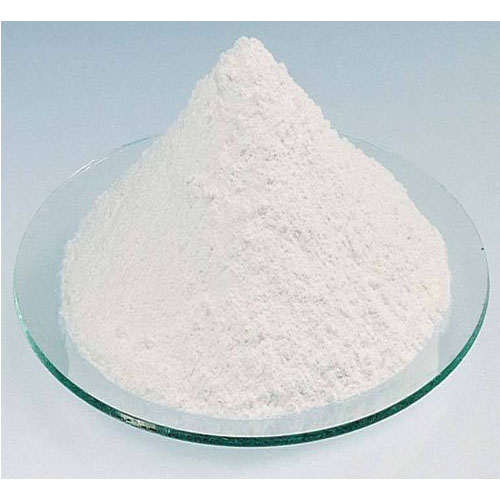
Clay minerals are usually layered structures with silicon-oxygen tetrahedron sheets and aluminum-oxygen octahedron sheets connected by shared oxygen in different proportions. They have the characteristics of large specific surface area, strong cation exchange capacity, and ability to adsorb heavy metals and organic matter. The adsorption, desorption and precipitation of uranium ions on the variable charge surface can control the migration and enrichment of uranium elements. It is an ideal adsorption material for uranium enrichment adsorption in solution and uranium removal and recycling in wastewater.
1. Kaolin materials
As one of the most important clay minerals in the natural environment, kaolin plays a key role in fixing and delaying the transfer of pollution. In recent years, the starting point of research on the adsorption of uranyl ions on kaolin is based on the existence of functional groups on the surface of kaolin that can react with uranyl ions. The materials with better adsorption properties obtained by kaolin modification are uranium adsorption materials. One of the main research directions in the future.
2. Attapulgite clay materials
Attapulgite has a unique layer-chain crystal structure, slender fibers, porous, large surface area, and good adsorption performance. The Si4+ contained in attapulgite is replaced by Al3+, and the residual negative charge that appears enables it to adsorb heavy metal ions and radionuclides from the aqueous solution.
The naturally occurring attapulgite clay is endowed with unique properties of composite materials through activation or modification treatment, which can be widely used in environmental wastewater treatment, and the removal, enrichment and utilization of radionuclide uranium provides an inexpensive adsorption and separation material.
3. Montmorillonite materials
Montmorillonite has the advantages of large expansion, strong ion exchange capacity, and the ability to adsorb a large amount of uranium. However, natural montmorillonite is not efficient in treating uranium-containing wastewater, and its adsorption capacity and adsorption performance can be improved by modification.
4. Halloysite materials
Halloysite is a kind of natural clay mineral with unique structure, environmental friendliness, low cost and easy availability. Using its unique structural characteristics and adsorption characteristics, composite materials with efficient uranium adsorption can be prepared. It has a very large role in the field of uranium adsorption materials. potential.
5. Illite materials
Illite is a stable, high load-carrying capacity, low-cost clay mineral. It is a good adsorbent and can remove heavy metals in solution. Illite is also a useful carrier material, which can reduce the aggregation effect and improve its performance. It is an efficient and excellent uranium adsorption material due to its activity and carrying capacity.
Four major modification technologies of hydrotalcite
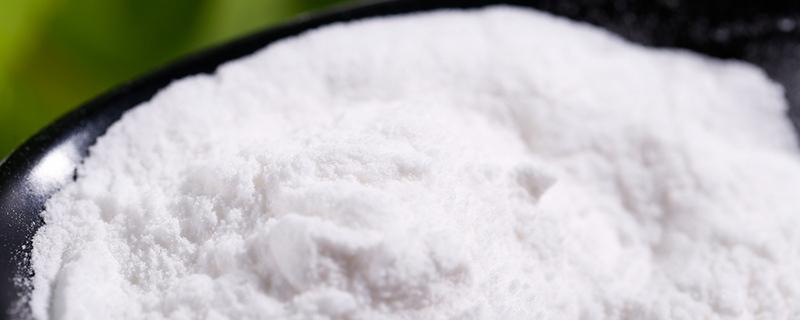
Hydrotalcite (Layered Double Hydroxides, LDHs) is a layered inorganic carrier functional material, the interlayer anions are exchangeable, and the quantity and type can be strategically adjusted according to actual needs. The tunable denaturation characteristics of this composition and structure of LDHs make them one of the materials with research potential and application prospects in the fields of industrial catalysis, photoelectrochemistry, drug release, plastic modification, and wastewater treatment.
Because LDHs are highly hydrophilic inorganic substances, and the interlayer spacing of the lamellar structure is small, the compatibility with polymers is poor, and the nano-scale dispersion of LDHs is not easy to achieve. In addition, the exchangeability of anions between LDHs layers makes the modified LDHs have specific functional properties. Therefore, LDHs need to be modified to improve the interfacial properties and expand the application range.
There are many modification methods for LDHs, and the appropriate method can be selected according to the required properties and application fields of synthetic materials. Among them, the most commonly used methods mainly include co-precipitation method, hydrothermal synthesis method, ion exchange method and roasting recovery method.
1. Co-precipitation method
Co-precipitation is the most commonly used method for the synthesis of LDHs. Add the mixed aqueous solution containing a certain proportion of divalent and trivalent metal cations into the alkaline solution, control the pH value of the system, maintain a certain temperature, react under constant and rapid stirring until the solution precipitates, and continue to age the precipitate for a period of time , and then filtered, washed and dried to obtain LDHs solid. Usually nitrates, chlorides, sulfates and carbonates can be used as metal salts, and the commonly used alkalis can be selected from sodium hydroxide, potassium hydroxide and ammonia water. The co-precipitation method has the advantages of simple process method, short synthesis period, easy control of conditions and wide application range. Various compositions and types of LDHs can be prepared by using different anions and cations.
2. Hydrothermal method
In general, the hydrothermal method does not require high temperature treatment, and can control the crystal structure of the product to obtain LDHs with obvious layered structure. The mixture was placed in an autoclave, and at a certain temperature, static reactions of different durations were performed to obtain LDHs.
3. Ion exchange method
The ion exchange method is to exchange the interlayer anions of the existing LDHs with other guest anions to obtain a new type of guest LDHs compound. The number and type of anions between the layers can be adjusted according to the desired properties. The guest anion, exchange medium, pH and reaction time all have a great influence on the ion exchange process.
4. Roasting recovery method
The roasting recovery method is divided into two steps. The LDHs were first calcined at high temperature at 500–800 °C, and the interlayer CO32−, NO3− or other organic anion molecules could be removed after the calcination process. The lamellar structure collapsed to obtain Layered Double Oxides (LDO). Then, according to the memory effect of LDO, it absorbs anions to reconstitute into LDHs in aqueous solution. The advantage of the calcination recovery method is that the desired anionic hydrotalcite can be obtained in a targeted manner, and it can eliminate the competition with organic anions, improve the acid resistance, and be applied in a wider pH range. It should also be considered that too high calcination temperature may destroy the layered structure of hydrotalcite. In addition, attention should be paid to the concentration of anionic media during recovery.
The importance and use of the four major non-metallic minerals quartz, graphite, fluorite and pyrophyllite
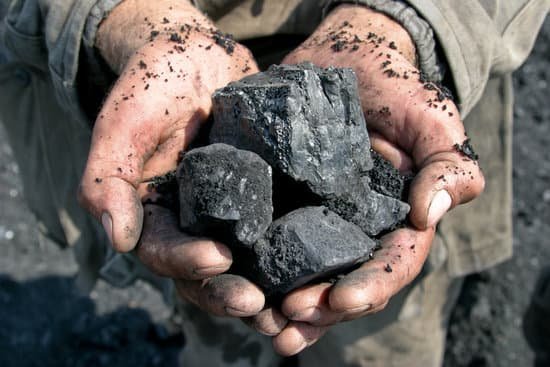
Almost all strategic emerging industries are more or less related to non-metallic minerals and their products, especially in the new material industry, graphite, fluorite, pyrophyllite, quartz and their products play an irreplaceable and important supporting role. Non-metallic minerals such as graphite and fluorite are listed as "strategic minerals" or "key minerals" by China, Japan, Australia and other countries, and the United States is listed as "crisis minerals".
1. High-purity quartz
High-purity quartz has excellent physical and chemical properties. High-purity quartz sand is mainly used in industries such as quartz glass and integrated circuits. Its high-end products are widely used in new-generation information technology, high-end equipment manufacturing, new materials and other industries. Quartz has always existed as a material of strategic importance, and since World War II, the electronic components of communication telephones and military wireless telephones have been made of quartz. The globally recognized high-purity and ultra-high-purity quartz raw materials are an important foundation for today's high-tech products and a necessary condition for the sustainable development of a country's high-tech products. In Germany, ultra-high-purity quartz raw materials have been listed as strategic materials and the export has been restricted.
Application of High Purity Quartz in Strategic Emerging Industries:
A new generation of information technology; High-end equipment manufacturing; New materials; New energy.
2. Graphite
Graphite has always been an indispensable and important strategic resource for the development of military and modern industries. Graphite is mainly used in the production of lithium-ion battery anode materials, new power batteries, super capacitors, etc. in the new energy automobile industry; in the new energy industry, it is mainly used in the production of solar cells. , Wind power energy storage batteries; in the high-end equipment manufacturing industry, it is mainly used to produce sealing materials and neutron moderators; in the new generation of information technology industries, it is used to produce high energy storage, key electronic materials, etc. The development and utilization of graphene has raised the use of graphite to a new level. In the future, graphite and its products will be widely used in aerospace satellites, smart phones, tablet computers, hybrid vehicles, electric vehicles, solar cells and other fields, becoming a strategic emerging material. China, Japan, the European Union, India, the United Kingdom, Australia, OECD and other countries have successively issued industrial policies on the development of graphite, which regard graphite as a "key mineral" or "strategic mineral", and the United States lists graphite as a "crisis mineral".
Application of graphite in strategic emerging industries:
High-end equipment manufacturing; New energy; New energy vehicles; New generation information technology; New material field; Biology.
3. Fluorite
Fluorite, also known as fluorite, is mainly composed of calcium fluoride (CaF2). Fluorite is a world-class scarce resource similar to rare earth. China, the United States, the European Union, Japan and other countries all list fluorite as a "strategic mineral" or "key mineral", and the United States lists fluorite as a "crisis mineral". Fluorite is a fluorine raw material, and fluorine-containing materials are one of the new chemical materials. Fluorine chemical products have high performance and high added value. In addition to being widely used in industrial sectors and daily life, its products and materials are also widely used in strategic emerging industries such as new energy, biology, energy conservation and environmental protection, and new energy vehicles. technology industry.
Application of Fluorite in Strategic Emerging Industries:
New energy; New energy vehicles; Biology; Energy saving and environmental protection; New material.
4. Pyrophyllite
Pyrophyllite is a layered silicate mineral with chemical stability, low thermal expansion, low thermal conductivity, low electrical conductivity, high insulation, high melting point, and good corrosion resistance. Pyrophyllite is one of the important raw materials for the production of functional ceramics (superhard ceramics, ultrahigh piezoelectric ceramics), green new refractories, high-performance glass fibers, superhard materials (synthetic diamond), etc. blade) materials and new functional materials.
Application of pyrophyllite in strategic emerging industries:
High-end equipment manufacturing; new energy; new material; biology.
What are the barriers to the purification process of high-purity quartz sand?
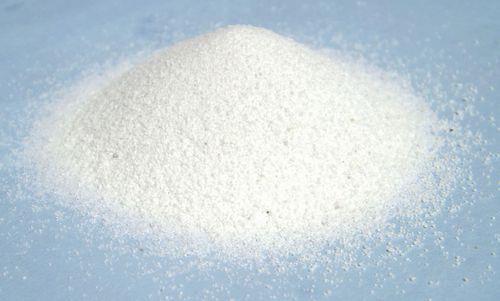
The preparation of high-purity quartz is mainly through chemical synthesis, natural crystal processing and deep purification of quartz minerals. However, because the preparation of chemical synthesis and natural crystal processing is restricted by raw materials, cost, output, etc., it is difficult for large-scale industrial application. Therefore, The preparation of high-purity quartz through mineral processing is the focus of research and application in the past and present.
The purification process of high-purity quartz first grinds vein quartz or quartzite to the required particle size and removes some impurities, and then separates or dissolves impurities by physical and chemical means. The whole purification process can be simply summarized as three processes: pretreatment, physical treatment and chemical treatment, and specifically adopts various beneficiation methods such as crushing, grinding, screening, magnetic separation, pickling, and chlorination roasting. The corresponding quartz purification process is designed according to the composition and grade of the original ore: quartz ore with high sodium content needs to be calcined at high temperature, and carbonate minerals with high calcium and magnesium content need to be pretreated with hydrochloric acid.
Specifically, the three major steps of purification of high-purity quartz sand are as follows:
(1) Preprocessing link. The purpose of the pretreatment stage is to preliminarily screen impurities or crush the quartz raw materials to the desired particle size that is conducive to the release of impurities and subsequent processing. Generally, mechanical crushing, electric crushing, optical sorting, ultrasonic crushing, thermal shock crushing and other processing methods are used.
(2) Physical processing stage. The physical beneficiation methods mainly include grinding, color separation, magnetic separation, flotation and other methods, which are generally used to treat the impurities of the associated minerals in quartz.
(3) Chemical treatment stage. Compared with physical beneficiation, chemical treatment is more efficient in removing impurities, and the advantages of deep penetration in microcracks and grain boundaries can better handle inclusion and lattice type impurities. Pickling, leaching and thermal chlorination are the three main chemical treatment processes.
Regarding impurities, which are the most difficult to purify?
There are many kinds of impurity elements in quartz. The content of each impurity element in quartz has different effects on purification and processing. Therefore, it is necessary to consider the upper limit of the content of the main impurity elements, rather than simply setting the upper limit of the total amount. Natural quartz crystals often co-produce with a variety of minerals, such as chlorite, rutile, tourmaline, calcite, fluorite, muscovite, biotite, sphalerite, hematite, pyrite, epidote , cordierite, feldspar, amphibole, garnet, pyroxene, topaz, ilmenite and clay minerals, etc., these minerals are the main source of impurities in quartz solid inclusions.
Fe: For different forms of iron impurities, different beneficiation and purification methods such as screening, classification, scrubbing, chemical acid leaching, flotation, gravity separation, magnetic separation and microbial leaching can effectively purify iron impurities.
Al: The aluminum impurities in quartz ore mainly exist in the form of feldspar, mica and clay minerals, which can be removed by scrubbing and grading desliming methods. For the aluminum-bearing minerals in the form of feldspar, the effective separation from quartz has always been a difficult point in the beneficiation industry, especially the separation of feldspar and quartz. Because the two belong to framework silicate minerals with highly similar physical properties, they cannot be separated by gravity separation and magnetic separation. The most effective method is flotation, and mixed acid leaching is also used in deep purification.
Therefore, some scholars judge whether naturally produced quartz can be used as high-purity quartz according to the content of Al and Ti in quartz. Usually, the content of Al and Ti in quartz is relatively high, and it is difficult to remove them by a simple purification process, and fine purification will increase the production cost. Therefore, the content of Al and Ti in quartz is the main factor restricting the purity of quartz. Accordingly, when the content of Al and Ti in quartz is less than 25ug/g and 10μg/g natural quartz, respectively, it can be attributed to the category of high-purity quartz.
In summary, we believe that the purification technology process of high-purity quartz sand is not complicated, but it is difficult to identify ores and achieve the ultimate purification of some impurities through combined processes, especially for the removal of some specific elements.
Is the talc used for plastic reinforcement and modification, the whiter the better?
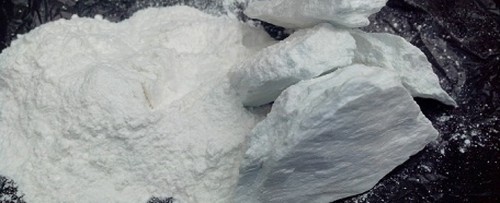
Plastic reinforcement and modification is an important application field of talc, especially for polypropylene modification in the automotive and home appliance industries, and whiteness is an important indicator of talc products. So, is talc powder for plastics, the whiter the better?
The whiteness of talc used in the plastics industry is usually expressed by CIE Lab (L*a*b*). In addition to measuring dry whiteness, wet whiteness is also measured. Dry whiteness is the definition of whiteness in the usual sense. Wet whiteness is the whiteness of talc powder after adding an appropriate amount of DMP (dimethyl phthalate) or DOP (dioctyl phthalate).
The factors that determine the whiteness of talc are not only the raw material itself, but also the particle size, moisture and impurities. If it contains dark impurities, such as iron sulfide, graphite, etc., the finer the product, the lower the whiteness.
There are many colors of talc in nature. Light-colored talc is white after crushing, but after mixing with resin, the color of the matrix will show more or less the true color of talc. This disadvantage limits the versatility of talc, especially the use of dark-colored talc in plastics. Compared with dry whiteness, wet whiteness can more intuitively reflect the degree to which talc changes the color of the plastic matrix. The lower the b*(b) value in wet whiteness, the smaller the color change of the plastic matrix.
Most of the world's talc is not white. White talc mainly comes from China, Afghanistan, and India, which is relatively limited. With the growing demand for white talc in the plastics industry, the price has continued to rise in the past 20 years. The shortage of white talc is a long-term trend in the future. In fact, white talc is not needed in many applications. For example, in the enhancement and modification of dark plastic, the enhancement effect of using white talc and dark talc is the same.
Tests show that for every 1% increase in wet whiteness of talc, the whiteness of the final product increases by only 0.2% to 0.3%. One-sided pursuit of the whiteness of talc is meaningless. In the past, because the price of white talc was too low, many users did not think much about the increase in the cost of using white talc. With the reduction of supply and the increase of price, it is necessary to change the usage habits and improve the comprehensive utilization of resources.
The talc powder used for enhancement and modification also needs to control the number of black spots, especially for light-colored products that have higher requirements on appearance. These black spots are formed after grinding of natural iron sulfide ore, dark minerals such as graphite, or dark impurities from mining. A small amount of black spots has basically no effect on whiteness, but visible black spot defects will be formed on the surface of light-colored plastic products, affecting the appearance. A large number of black spots will adversely affect whiteness. The impurities will be further broken with the increase of powder fineness, resulting in a decrease in powder whiteness.
Steady growth in the market size of silica for toothpaste
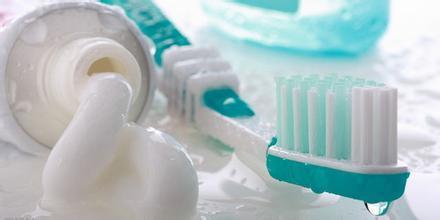
Silica is a high-quality abrasive that has developed rapidly in recent years. It is the only abrasive for preparing transparent and translucent toothpaste. It has the advantages of low friction value and good fluorine compatibility. Its friction value, oil absorption value, specific surface area, water absorption capacity , light transmittance, refractive index, etc. can be adjusted in a wide range to suit the needs of each formula, and the paste can also have excellent thixotropy, dispersibility, stability and other physical and chemical properties.
The global market space in the toothpaste field is about 300,000 tons, of which about 60,000 tons are domestic, and it is expected to maintain stable growth. Market growth reports show that the global market size of silica for toothpaste in 2021 will be US$390 million, with a compound growth rate of 4.85% from 2021 to 2028, and the market size will reach US$494 million by 2026, of which the domestic demand for silica in toothpaste industry The scale is close to 800 million yuan, corresponding to an average price of about 0.8-15,000/ton (the global/domestic market demand is 30/60,000 tons).
With the improvement of health awareness, the oral care market in which toothpaste is located is expected to reach a CAGR of 10% in the next five years. Frost & Sullivan predicts that the total retail sales of my country's oral care market will increase to 152.2 billion yuan in 2025, with a CAGR of 10%. Toothpaste is the main oral cleaning product, accounting for 60% of the oral care market, and as a daily necessities, the unit price is relatively low, with rigid demand, and the market size is expected to grow steadily.
The domestic market space of silica for toothpaste is about 800 million, and the demand is about 60,000 tons. Abrasives are the main raw materials of toothpaste, generally accounting for 20% to 30% of the total formula (by weight), and have an important impact on the basic functions of toothpaste to clean the mouth and reduce tooth stains. The global demand is predicted to be between 300,000 and 350,000 tons according to Market growth reports; the domestic consumption of silica for toothpaste in 2019 is 45,000 tons, and the China Oral Cleaning and Care Products Association predicts the scale of domestic demand for silica for toothpaste in 2026 It is close to 800 million yuan, corresponding to an average price of 0.8-15,000/ton, and the market demand is about 60,000 tons, with a compound growth rate of 5% in 2021-2026.
Under the trend of consumption upgrading, the proportion of silica in abrasives is expected to increase
As a high-quality abrasive for toothpaste, the penetration rate of silica in the domestic market is expected to further increase under the consumption upgrade.
Silica is expected to achieve product substitution due to the sharp rise in the price of calcium hydrogen phosphate. Phosphate rock is a non-renewable resource and has been approved by the State Council as a strategic mineral, and its mining is strictly controlled. At the same time, phosphorus chemical industry is a high-pollution, high-energy-consuming industry. The operating rate is limited under the background of environmental protection and dual carbon, and under the background of tight supply The price of phosphate continues to climb to 4,000 yuan / ton, an increase of nearly 100% from the beginning of 2020, and the price of food-grade calcium hydrogen phosphate has been higher than the price of silicon dioxide, so silicon dioxide is expected to realize the realization of hydrogen phosphate in the next 1-2 years. Fast replacement of calcium.
Calcium carbonate has disadvantages such as damage to teeth, and will be replaced at an accelerated rate under the trend of consumption upgrading. The RDA value of natural calcium carbonate is usually high, which is easy to damage the gums and dentin. In addition, calcium carbonate easily reacts with free fluorine in fluoride toothpaste to produce insoluble calcium fluoride, which affects the efficacy of fluoride toothpaste. At present, the proportion of A-grade toothpaste (> 9 yuan per stick) in the domestic market has reached 55%, and the proportion of calcium carbonate will decrease under the trend of consumption upgrading. And the rising price of calcium carbonate also makes the advantage of low price no longer prominent.
The calcium carbonate industry is highly competitive, focusing on the development of high-end products such as modification is the key
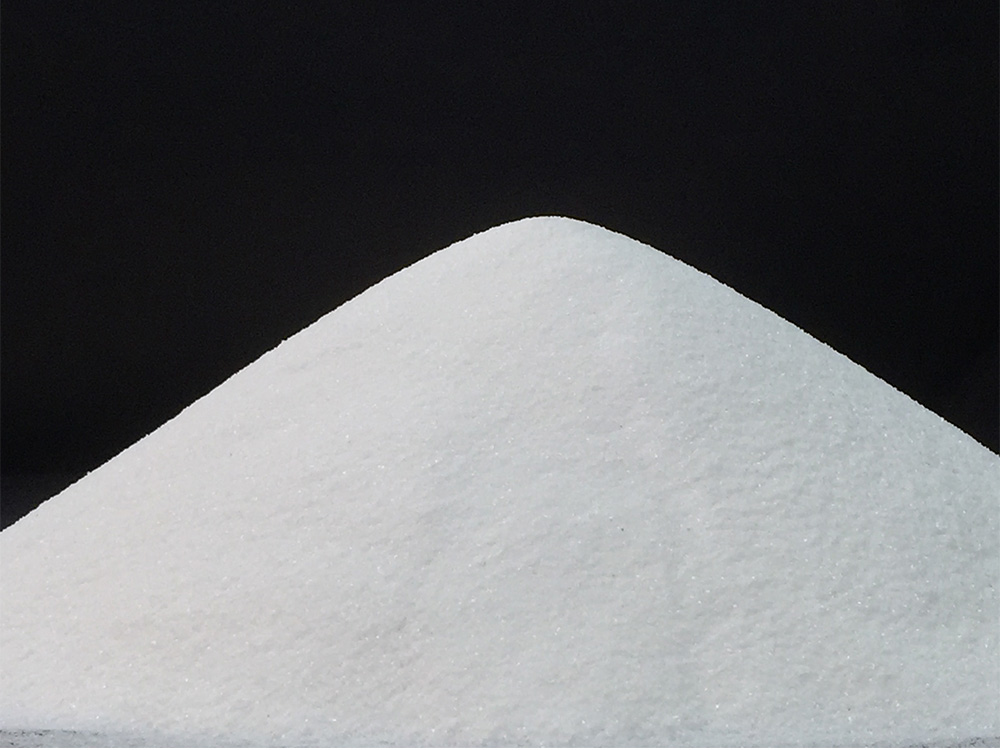
China is the world's largest producer and consumer of calcium carbonate, with annual production and sales accounting for more than 30% of the world's total. In 2020, the market size will reach 7 billion yuan. The production areas are mainly concentrated in Guangxi, Sichuan, Guangdong, Anhui, Jiangxi, Hunan, Henan, etc. province.
Although my country is a big producer of calcium carbonate, but limited by resources, technology, capital, site, cost control, etc., many enterprises have backward production technology, low industrial level, high resource consumption, heavy environmental pollution, low degree of land and energy intensive conservation, Due to the lack of high-end talents and the lack of independent innovation ability of enterprises, it is still not a strong country in the production of calcium carbonate products.
Calcium carbonate enterprises should change the industrial chain formation mode, take the market as the center, and change the traditional "production, supply and marketing homeopathic mode" into "marketing, supply and production trans mode". The production enterprises of downstream products in the industry should be introduced into construction first, and then the production of calcium carbonate powder should be planned according to production needs. Qualified enterprises should form an industrial chain internally, so that the products produced are interlinked, eliminating excess capacity and maximizing profits.
The calcium carbonate industry should focus on high-end development, do a good job in product modification, enrich and improve product performance; promote product refinement and specialized development, focus on crystal form control, and provide a foundation for downstream development; do a good job in product, production equipment, and process control. The upgrading of the industry and the upgrading of mechanization to automation and intelligence; to do a good job in group standards, the original national standards can no longer represent the advanced level of the industry, so the development of group standards is conducive to increasing industry-specific calcium varieties and improving product quality. The industrial scale of upstream and downstream enterprises continues to expand, and a complete calcium carbonate industry chain is initially formed.
From the perspective of market competition, the competition in my country's calcium carbonate industry is becoming increasingly fierce. Large-scale calcium carbonate manufacturers have high production and sales rates, and the product supply is in short supply, and they have expanded their production capacity. Small and medium-sized calcium carbonate manufacturers are facing survival difficulties due to high energy consumption, small scale, and poor quality stability, and there is a need for further integration in the industry. In the future, in the process of industry integration and further improvement of market concentration, large calcium carbonate manufacturers will achieve better development by virtue of their advantages in scale, technology, brand and quality.
Effects of Ultrafine and Calcining Treatment on the Hiding Power of Kaolin
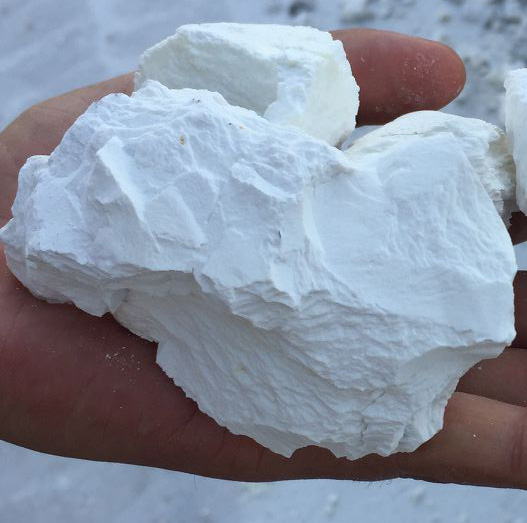
Coal-measure kaolinite is a very important non-metallic mineral. The kaolin obtained by crushing, grinding and calcining has a series of excellent properties and has been widely used in many industries, especially the paint industry.
At present, the price of comon calcined kaolin products is relatively low, but its application in high-grade coatings is limited due to its unsatisfactory covering power. The effects of ultra-fine and calcination treatments on the covering power of kaolin were studied, and the results showed that:
(1) With the increase of particle size, the covering power of calcined kaolin gradually increases. The main reason is that the finer the kaolin particles, the greater the covering power.
(2) When the calcination temperature is higher than 850 °C, with the increase of the calcination temperature, the fine particles are sintered to form larger particles, which reduces the covering power of kaolin.
(3) The coal-measure kaolin is crushed, ground, and ultra-fine, calcined at 850 °C, and then disintegrated and depolymerized for a second time to obtain calcined kaolin with high covering power, which provides practicality for the application and deep processing of coal-measure kaolin. reference basis.

